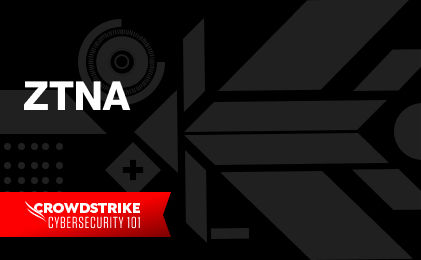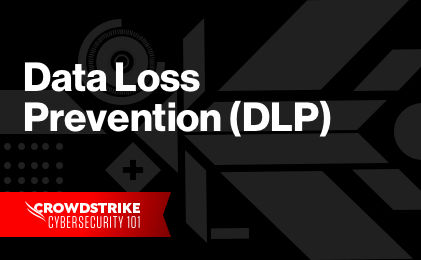Zero Trust vs SASE
Given the sudden acceleration of remote work capabilities, people are no longer working within a traditional network perimeter. In fact, users themselves are defining the perimeter, accessing the network, applications, and assets from a variety of locations, often while using personal devices.
This shift to the cloud requires organizations to update and enhance their existing security strategy and toolset to provide protection to all users, devices, data, infrastructure, networks and assets no matter who is accessing them or where they are being accessed.
In this environment, two solutions have emerged as critical components of a robust cloud security strategy: Zero Trust and Secure Access Service Edge (SASE). But while these terms may have both become commonplace in the cybersecurity world, some confusion remains as to the specific capabilities of each and how they relate.
In this post, we take a closer look at Zero Trust and SASE and answer some common questions that organizations have when incorporating these into their overarching cybersecurity framework.

The Complete Guide to Building an Identity Protection Strategy
Take the first step toward a resilient identity security posture and download the Complete Guide to Building an Identity Protection Strategy to protect your organization’s digital identity landscape today.
Download NowWhat is Zero Trust?
Zero Trust is a security framework requiring all users, whether in or outside the organization’s network, to be authenticated, authorized, and continuously validated for security configuration and posture before being granted or keeping access to applications and data. Zero Trust assumes that there is no traditional network edge; networks can be local, in the cloud, or a hybrid thereof.
Execution of the Zero Trust Security framework combines advanced technologies such as risk based multi-factor authentication, identity protection, next-generation endpoint security, and robust cloud workload technology to verify a user or systems identity, consideration of access at that moment in time, and the maintenance of system security. Zero Trust also requires consideration of encryption of data, securing email, and verifying the hygiene of assets and endpoints before they connect to applications.
What is SASE?
Secure Access Service Edge (SASE) is a security model that provides secure access to applications and data based on a strong digital identity.
Coined by Gartner, the SASE architecture combines several distinct security components into a single, integrated, cloud-based solution. Components include:
- Networking and network security services, such as Zero Trust Network Access (ZTNA)
- Cloud access security broker (CASB)
- Firewall as a service (FWaaS)
- Secure web gateway (SWG)
- SD-WAN solutions
- Data loss protection (DLP)
Since the SASE incorporates several distinct cloud security tools and components, it offers extensive and robust functionalities, including:
- Managing network traffic, users, applications, devices and infrastructure components
- Enabling companies to authenticate users via robust digital identity capabilities
- Proactively identify and remediate security threats
Zero Trust vs SASE: Key questions
Zero Trust and SASE are alike in that they are both security-related infrastructure systems that help the organization secure their assets and protect against cyber threats. However, while some use the terms interchangeably, or even assume that implementing the former automatically delivers the latter, in fact they are two separate, albeit related capabilities.
Here we explore some of the most common questions IT teams have about the functionalities of SASE and Zero Trust and how they relate:
What’s the difference between SASE and Zero Trust?
The most notable difference between SASE and Zero Trust has to do with the scope of the solution. Zero Trust is purely focused on providing access management and access control to authenticated users. The nature of SASE, on the other hand, is broader, in that it bundles a host of network and security services – Zero Trust Network Access being one – into a single solution.
Another core difference is in identity. In a Zero Trust model, there is no such thing as a trusted user. Rather, the device or user must be authenticated as part of each access request. By comparison, SASE is identity-driven, [meaning that it uses the digital identity of the requestor to determine access.]
Does implementing SASE automatically provide Zero Trust?
Not necessarily. While SASE is built on Zero Trust principles and Zero Trust access is a core component of SASE, implementing SASE does not necessarily mean that the organization will achieve Zero Trust as a direct result. This is because the Zero Trust strategy has multiple components in addition to ZTNA.
Which is better: SASE or Zero Trust?
Organizations need not think of SASE and Zero Trust as an “either/or” scenario. Rather, they are two complementary components within a comprehensive cybersecurity strategy.
While SASE provides a more holistic set of capabilities, it is also far more complex, time-consuming and resource intensive to integrate, deploy and operate. By comparison, the functionalities of a Zero Trust solution are narrower, but the model is also generally much simpler to implement and operate.
For this reason, most organizations are focused on Zero Trust as a near-term goal and are working towards SASE in the longer term.
How can Zero Trust and SASE work together for your business?
Organizations that can consolidate their SASE and Zero Trust model into a single, integrated capability can unlock several important benefits for their business:
- Comprehensive security: When successfully deployed and integrated the SASE and Zero Trust models provide the organization with enhanced visibility into their IT environment and eliminate gaps and silos within the security architecture.
- Reduced complexity: By combining SASE and a Zero Trust model, an enterprise can centralize the security toolset and streamline some aspects of the IT environment. This, in turn, can help reduce network complexity by avoiding integrations between devices, services and users.
- Improved scalability: Unlike traditional VPN measures, which require additional hardware and software investments to expand, the SASE and Zero Trust approach can easily scale up or down depending on the organization’s needs. This helps improve business performance and agility, as well as reduced costs.
- Resource optimization: As with many advanced security solutions, successful implementation of SASE and Zero Trust principles automates some routine and recurring aspects of the security agenda, which frees up staff to focus on higher-value tasks.







